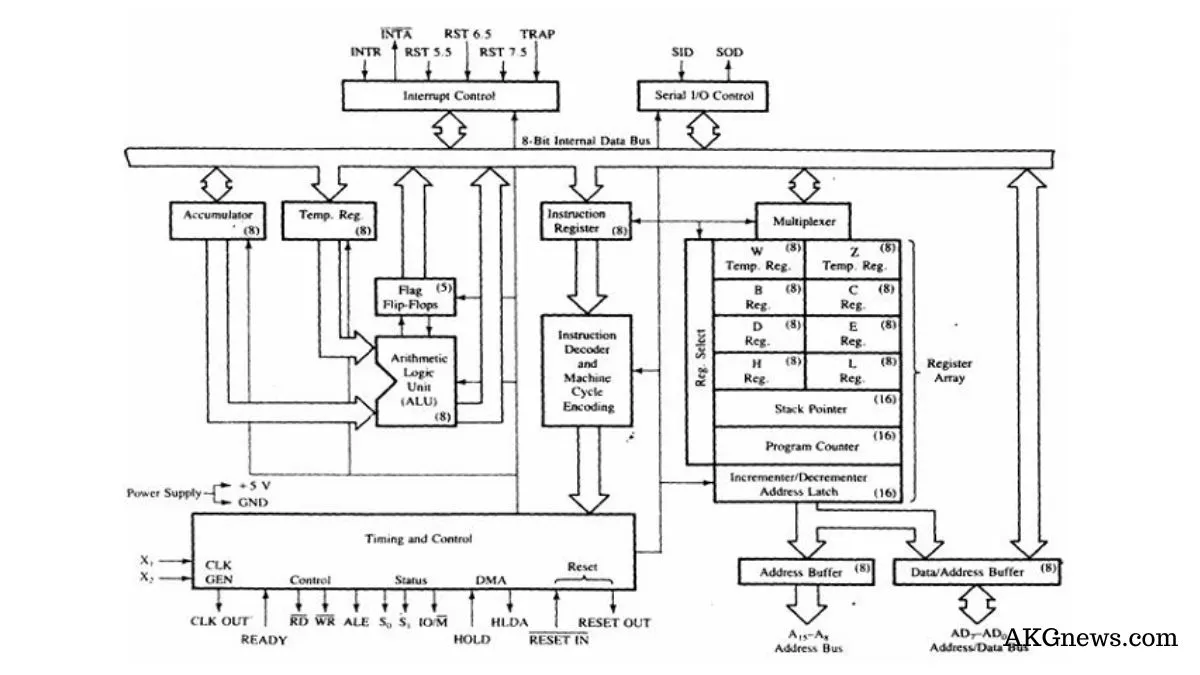WHAT IS A MICROPROCESSOR?
The word comes from the combination of micro and processor. Processor means a device that
processes whatever. In this context, processor means a device that processes numbers,
specifically binary numbers, 0’s and 1’s.To process means to manipulate. It is a general term
that describes all manipulation. Again in this context, it means to perform certain operations
on the numbers that depend on the microprocessor’s design. It is a programmable device that
takes in numbers, performs on them arithmetic or logical operations according to the program
stored in memory, and then produces other numbers
As a Programmable device:
• The microprocessor can perform different sets of operations on the data it receives
depending on the sequence of instructions supplied in the given program.
• By changing the program, the microprocessor manipulates the data in different ways as
Instructions, Words, Bytes, etc.
• They processed information 8 bits at a time. That’s why they are called ―8-bit
processors. They can handle large numbers, but in order to process these numbers, they
Working on 8085 microprocessor
The Intel 8085 is an 8-bit microprocessor that was first released in 1976. It uses a single 5-volt power supply and has a maximum clock speed of 3 MHz. The 8085 has a total of 40 pins, including 16 address pins and 8 data pins. It can address 64 KB of memory.
The 8085 has an instruction set of about 246 instructions, which are used to perform various operations such as arithmetic, data transfer, and control flow. The 8085 also has a number of registers, including the Accumulator, the Flags register, and the Program Counter, which are used to store data and control the flow of the program.
The 8085 also has an interrupt system, which allows it to respond to external events such as input/output requests. It also has a serial input/output interface, which allows it to communicate with other devices.
The 8085 microprocessor is used in many applications such as industrial control, medical equipment, and test instruments. It is considered old technology and no longer in production, but it is still used in some old equipment and also some hobbyist and educational projects.
8085 microprocessor architecture
FEATURES OF 8085
• 8-bit general purpose µp
• Capable of addressing 64 k of memory
• Has 40 pins as shown in fig 2
• Requires +5 v power supply
• Can operate with a 3 MHz clock
• 8085 upward compatible
The architecture of the Intel 8085 microprocessor is based on the Von Neumann model and is divided into three main components: the arithmetic and logic unit (ALU), the control unit (CU), and the registers.

- Arithmetic and Logic Unit (ALU): The ALU is responsible for performing arithmetic and logical operations such as addition, subtraction, and bitwise operations. It also contains flags that are set or reset based on the outcome of these operations, such as the carry flag (CY) and the zero flag (Z).
- Control Unit (CU): The CU is responsible for fetching and decoding instructions, and for controlling the flow of data and instructions. It also controls communication with the memory and I/O devices.
- Registers: The 8085 has a number of internal registers which are used to store data and control the flow of the program. Some important registers are:
- Accumulator: An 8-bit register that is used for arithmetic and logical operations.
- Flags: A group of flip-flops that store the status of the ALU operations.
- Program Counter (PC): A 16-bit register that stores the memory address of the next instruction to be executed.
- Stack Pointer (SP): A 16-bit register that stores the memory address of the top of the stack.
The 8085 also has a number of input/output (I/O) ports that are used to communicate with external devices. These ports are accessed using specific instructions and can be used to read and write data to and from the microprocessor.
Additionally, the 8085 uses memory-mapped I/O, which means that the I/O devices are accessed using memory addresses, rather than dedicated I/O instructions. This simplifies the instruction set and allows for more efficient communication with external devices.

